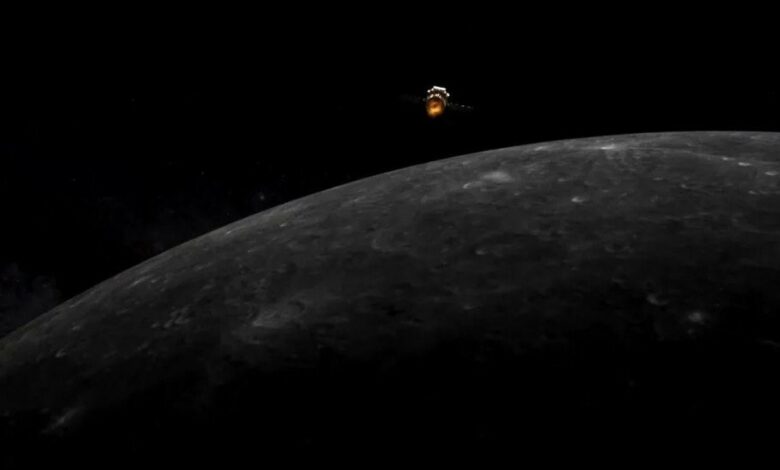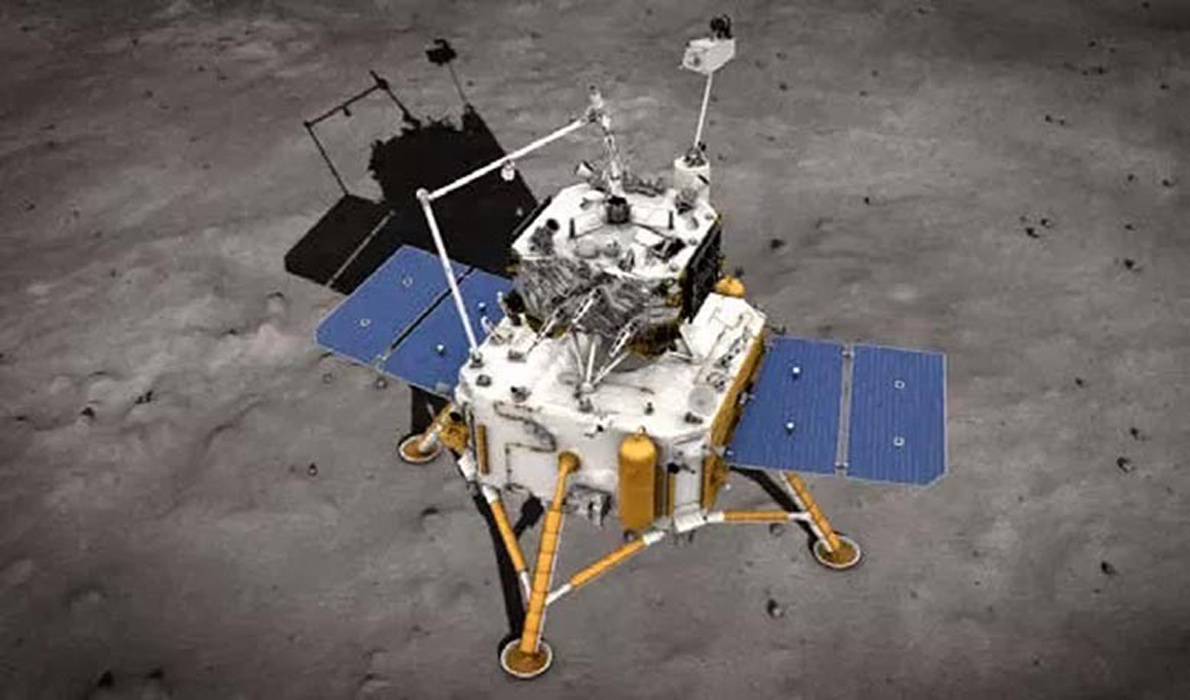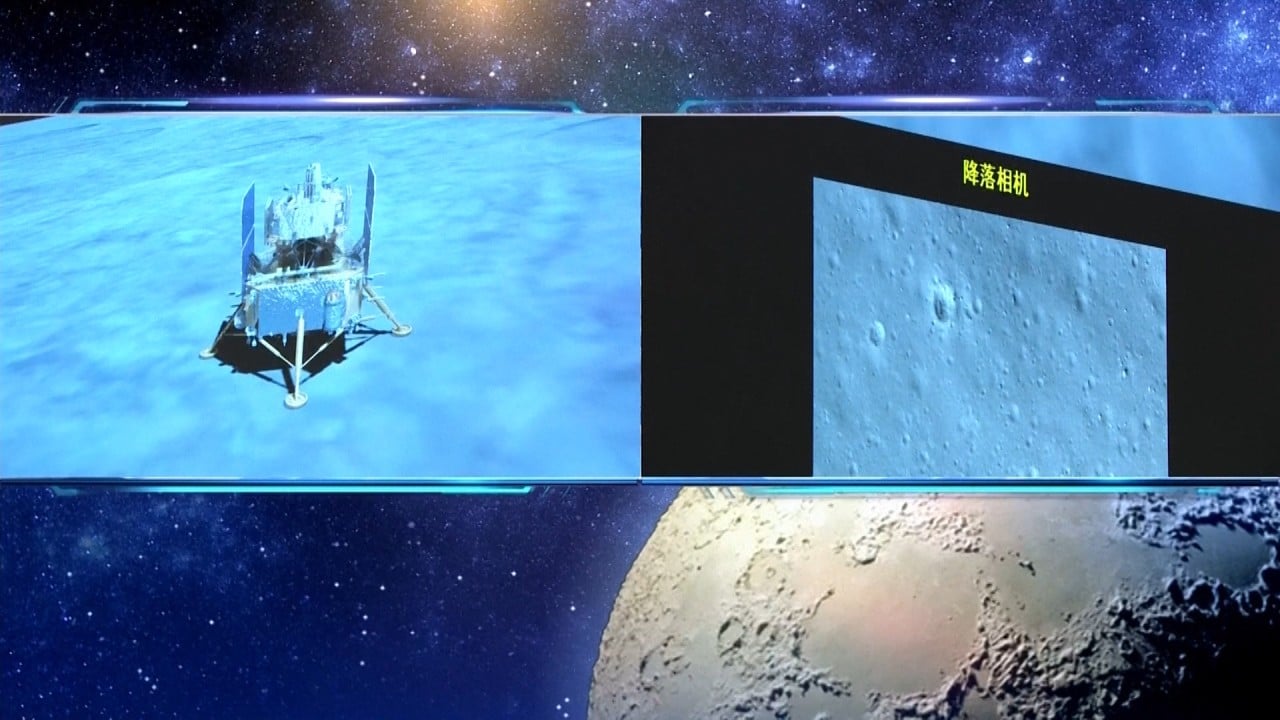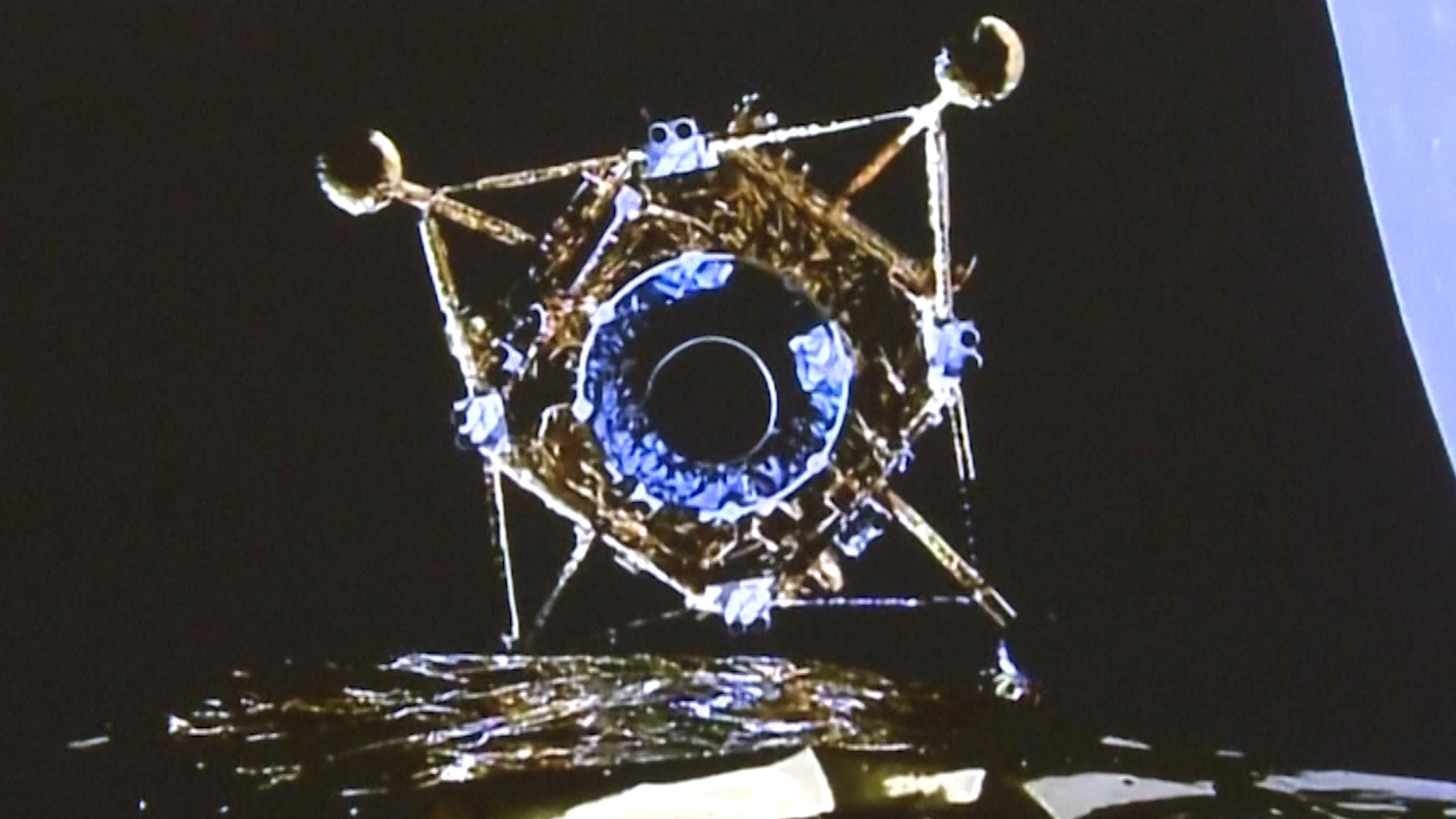Chang’e-5 Reaches for The Stars – Or in This Case, The Moon

In a historic attempt, China’s Chang’e-5 mission aims to retrieve and return rocks from the Moon to Earth; if successful, China will have been the third country to accomplish this so far, right behind the United States and the Soviet Union. Yes, the laast attempt to retrieve moon rock was in 1976, years before the dissolution of the USSR. And currently, Chang’e 5 has successfully braked to land in the Moon’s orbit!
The Chinese probe’s mission sounds very simple on paper – retrieve lunar rock and return them to Earth. In forty-four years, no other country has made an attempt in order to retrieve such samples, and for good reason – moon rock retrieval, while scientifically useful, is an extremely challenging mission that (often) overwhelms the scientific purpose of such material.
With space exploration and material retrieval activities gradually increasing in complexity.
Chang’e-5’s success is critical and of vital importance for ushering in a new phase of lunar exploration for China. The Chang’e family of spacecrafts – named after the Chinese goddess of the Moon – have touched down on various parts, including the far side of the natural satellite.
According to EarthSky Organization’s website, “after a journey lasting 112 hours, the Chang’e-5 spacecraft is now reported by space engineers in China to have entered orbit around the moon. The robotic mission is the first lunar sample-return mission since the 1970s. It launched last week (November 23, 2020) from the Wenchang Space Launch Center in China’s Hainan province, rising into the sky atop a Long March 5 rocket.”
Alongside these reports, the China Lunar Exploration Program had reported that “at 20:58 on November 28, the Chang’e-5 probe flew to the moon for about 112 hours and successfully ignited a 3000 N engine at a distance of 400 kilometers [248 miles] from the lunar surface. About 17 minutes later, the engine shut down normally.
According to the monitoring and judgment of real-time telemetry data, the Chang’e-5 probe braked normally in recent months and entered the orbit around the moon smoothly.”
Should things go according to plan, the moon rock samples will have been retrieved to Earth by mid-December, 2020.
The mission, apart from bridging a 20-year gap between moon rock collection missions, the Chang’e-5 will be the first spacecraft to realize China’s five firsts in the country’s space history:
- The first collection of samples from a celestial body.
- The first time a probe has taken off from the surface of a celestial body to anywhere, including Earth.
- The first unmanned rendezvous and docking of a spaceship in lunar orbit
- The first return to Earth with samples (in escape velocity!).
- The first research and analysis of moon samples for the nation.
The Planetary Society, a non-profit space advocacy program, have explained that “the samples should be the youngest ever returned to Earth: just 1.2 billion years old, when multicellular life may have already evolved on our planet.
Chang’e-5 will help scientists understand what was happening late in the moon’s history, as well as how Earth and the solar system evolved.” And while the mission is relatively short, it sure is to be densely filled with action.
Weighing in at just above eighteen thousand pounds, Chang’e-5 is expected to send a lander and an ascent vehicle to the lunar surface within days of its launch(Moon)
The mission is located in the Mons Rumker area of a volcanic plain, Oceanus Procellarum. Including NASA’s Apollo 12, portions of this particular region on the Moon have been partially explored by various other surface missions from different countries.

While the moon rocks brought home by the Apollo and Luna scientists are considerably older, the rocks formed in Mons Rumker is estimated to be a little over one billion years old. The Chinese stationary lander has been enabled to study the surrounding environment with cameras, ground-penetrating radar, and a spectrometer; its main mission, however, is to capture two kilograms of lunar material, dug up from two meters underground.
All of this is to be completed within two Earth weeks, or one lunar day – this is because Chang’e-5’s lander is completely solar-powered; the operating costs grow exponentially should the operation be delayed by yet another fourteen Earth days.
In a historic attempt, China’s Chang’e-5 mission aims to retrieve and return rocks from the Moon to Earth; if successful, China will have been the third country to accomplish this so far, right behind the United States and the Soviet Union. Yes, the laast attempt to retrieve moon rock was in 1976, years before the dissolution of the USSR. And currently, Chang’e 5 has successfully braked to land in the Moon’s orbit!
The Chinese probe’s mission sounds very simple on paper – retrieve lunar rock and return them to Earth. In forty-four years, no other country has made an attempt in order to retrieve such samples, and for good reason – moon rock retrieval, while scientifically useful, is an extremely challenging mission that (often) overwhelms the scientific purpose of such material.
With space exploration and material retrieval activities gradually increasing in complexity, Chang’e-5’s success is critical and of vital importance for ushering in a new phase of lunar exploration for China. The Chang’e family of spacecrafts – named after the Chinese goddess of the Moon – have touched down on various parts, including the far side of the natural satellite.

According to EarthSky Organization’s website, “after a journey lasting 112 hours, the Chang’e-5 spacecraft is now reported by space engineers in China to have entered orbit around the moon. The robotic mission is the first lunar sample-return mission since the 1970s. It launched last week (November 23, 2020) from the Wenchang Space Launch Center in China’s Hainan province, rising into the sky atop a Long March 5 rocket.” Alongside these reports, the China Lunar Exploration Program had reported that “at 20:58 on November 28, the Chang’e-5 probe flew to the moon for about 112 hours and successfully ignited a 3000 N engine at a distance of 400 kilometers [248 miles] from the lunar surface.
About 17 minutes later, the engine shut down normally. According to the monitoring and judgment of real-time telemetry data, the Chang’e-5 probe braked normally in recent months and entered the orbit around the moon smoothly.”
Should things go according to plan, the moon rock samples will have been retrieved to Earth by mid-December, 2020. The mission, apart from bridging a 20-year gap between moon rock collection missions, the Chang’e-5 will be the first spacecraft to realize China’s five firsts in the country’s space history:
- The first collection of samples from a celestial body.
- The first time a probe has taken off from the surface of a celestial body to anywhere, including Earth.
- The first unmanned rendezvous and docking of a spaceship in lunar orbit
- The first return to Earth with samples (in escape velocity!).
- The first research and analysis of moon samples for the nation.
The Planetary Society, a non-profit space advocacy program, have explained that “the samples should be the youngest ever returned to Earth: just 1.2 billion years old, when multicellular life may have already evolved on our planet. Chang’e-5 will help scientists understand what was happening late in the moon’s history, as well as how Earth and the solar system evolved.
” And while the mission is relatively short, it sure is to be densely filled with action. Weighing in at just above eighteen thousand pounds, Chang’e-5 is expected to send a lander and an ascent vehicle to the lunar surface within days of its launch. The mission is located in the Mons Rumker area of a volcanic plain, Oceanus Procellarum. Including NASA’s Apollo 12, portions of this particular region on the Moon have been partially explored by various other surface missions from different countries.

While the moon rocks brought home by the Apollo and Luna scientists are considerably older, the rocks formed in Mons Rumker is estimated to be a little over one billion years old.
The Chinese stationary lander has been enabled to study the surrounding environment with cameras, ground-penetrating radar, and a spectrometer; its main mission, however, is to capture two kilograms of lunar material, dug up from two meters underground.

All of this is to be completed within two Earth weeks, or one lunar day – this is because Chang’e-5’s lander is completely solar-powered; the operating costs grow exponentially should the operation be delayed by yet another fourteen Earth days.
SEO optimisation-pavitra




